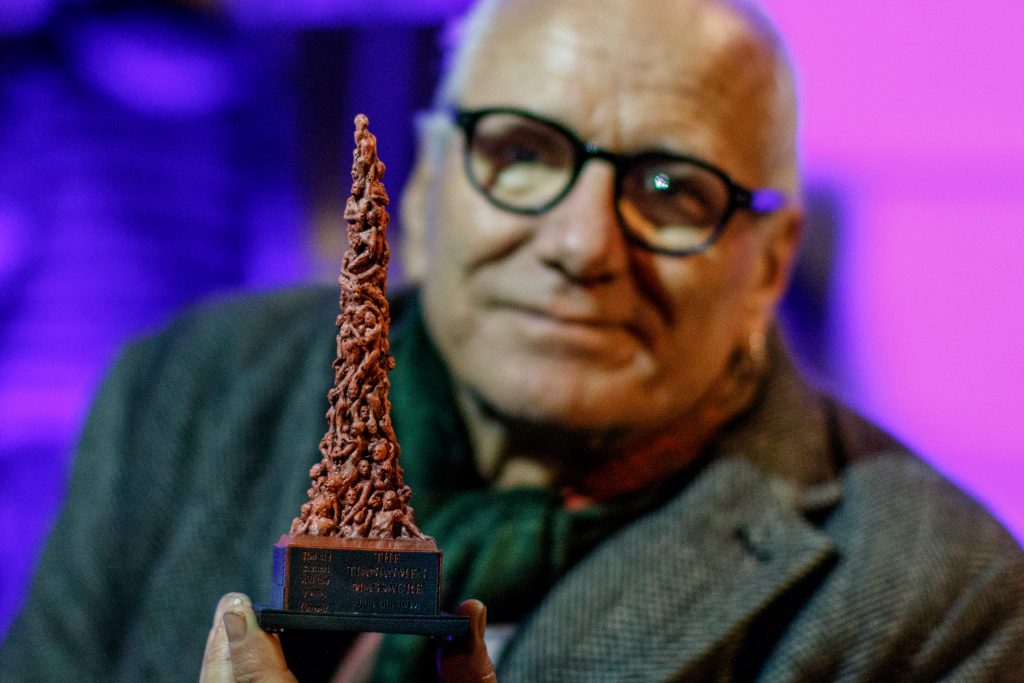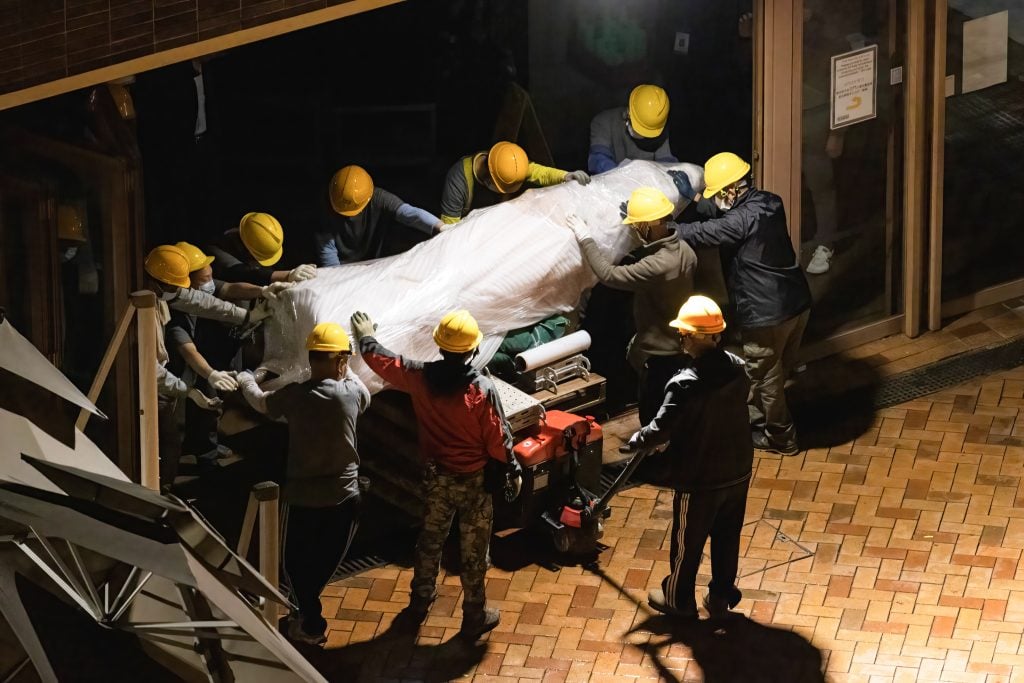Politics
The Artist Behind the ‘Pillar of Shame’ Tiananmen Memorial Suspects the Hong Kong Government Has a Warrant Out for His Arrest
Danish sculptor Jens Galschiøt has written to the city's authorities seeking answers.

Danish sculptor Jens Galschiøt has written to the city's authorities seeking answers.

Vivienne Chow

The artist behind The Pillar of Shame has asked the Hong Kong government if he has now become a wanted man, months after his sculpture created to commemorate the 1989 Tiananmen crackdown was seized by the authorities.
In a letter to the Hong Kong authorities dated August 11 and seen by Artnet News, Danish sculptor Jens Galschiøt questioned if the city’s Security Bureau has issued an arrest warrant against him should he set foot in Hong Kong to retrieve his artwork, and has planned to transfer his case to mainland China so that he would stand trial there, following recent media reports. Hong Kong Police Force did not confirm or deny the existence of an arrest warrant against the artist.
“I am surprised and angry. I have done nothing. They have confiscated my art and I am the victim,” Galschiøt told Artnet News. “This is very strange. I need a final answer.”
Hong Kong’s pro-establishment newspaper Sing Tao Daily reported on August 2 that the Hong Kong police’s national security department already made action plans to arrest Galschiøt should the artist travel to Hong Kong to stage a political show in the name of The Pillar of Shame, citing a source. The report added that the authorities were also exploring the possibilities of transferring “the relevant case” to mainland China under article 55 of the National Security Law, so that the defendants will stand trial on the mainland, which operates under a legal system that is vastly different from the common law system in Hong Kong.
Galschiøt said he did not understand what “the relevant case” was referring to. Sing Tao‘s report linked the alleged arrest warrant with the case of mainland Chinese student Zeng Yuxuan, who was accused of violating British colonial era’s sedition laws. Zeng was found in possession of The Pillar of Shame posters. But when the Hong Kong police’s national security department seized the 23-foot-tall monumental sculpture on May 5, it was related to an “incitement to subversion case.”

The upper-half of The Pillar of Shame seen being moved by the workers for later transportation. Photo: Alex Chan/SOPA Images/LightRocket via Getty Images.
The Pillar of Shame was created and first installed in Hong Kong when the city was still under the British rule, just before it was handed over to China in 1997. The work was then moved to the University of Hong Kong and remained on campus until the end of 2021 when the university ordered the work taken down. The sculpture was then been stored in a facility as leaders of the now-disbanded Hong Kong Alliance in Support of Patriotic Democratic Movements of China, which used to organize the annual virgil to commemorate the Tiananmen massacre in Hong Kong and facilitated the exhibition of the sculpture, remain in jail and facing charges.
“I offered [the Hong Kong Alliance] the artwork and I paid for the whole thing. I would go to Hong Kong to testify, to defend it, on the condition that I won’t be arrested. This is art, and I am the artist who made this,” Galschiøt said.
Galschiøt said he still was not informed about the fate of his artwork, which is his property. He was concerned how the situation surrounding The Pillar of Shame will set a very bad example for Hong Kong’s status as an art trading hub, as the case has demonstrated that freedom of expression and private property ownership were not fully respected. “I also perceive this confiscation as an infringement upon artistic freedom of expression and my property rights,” the artist wrote in his letter to the Hong Kong authorities, which he was expecting an answer to within 14 days.
A representative of the Hong Kong government’s general contact confirmed that it has received the letter but only relevant departments will respond.
The artist said that he has been in contact with the Danish government’s Ministry of Foreign Affairs and the E.U. Parliament about the case around The Pillar of Shame.
“In conducting any operation, police will act on the basis of actual circumstances and according to the law. A person arrested by police will be informed at the time of the arrest the offenses for which they are arrested,” the Hong Kong Police Force said in an email in response to Artnet News’s inquiry, without confirming whether or not there is an arrest warrant against the artist.
This story was updated on August 17 to include comments from Hong Kong Police Force.
More Trending Stories:
JTT, the New York Gallery Known for Minting Star Artists, Is Closing After More Than a Decade